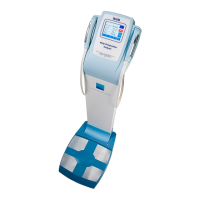What to do if the Tanita Fitness Electronics screen is dark?
- VVictor RoyAug 1, 2025
If nothing is displayed on your Tanita Fitness Electronics device and the touch panel screen appears dark, first, ensure the power is correctly connected. If the issue persists, it could be due to backlight failure or the weight exceeding the device's capacity, in which case, contact the retailer.

